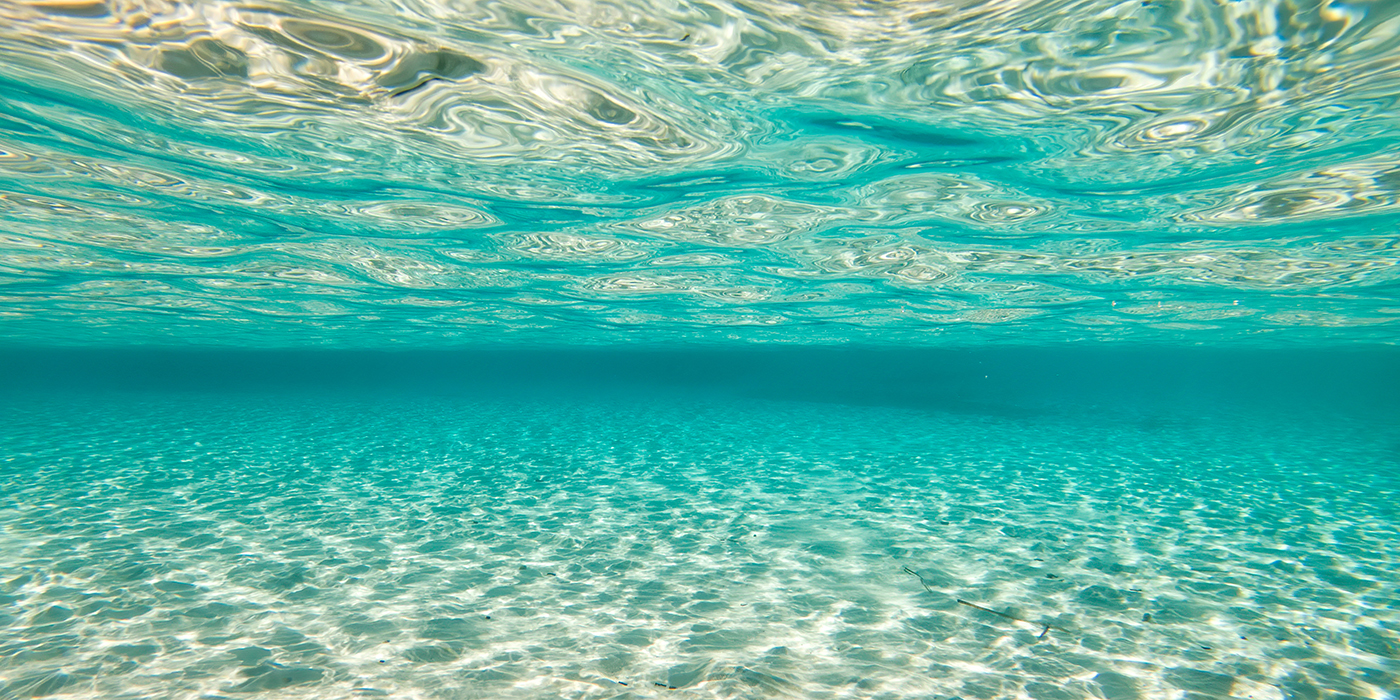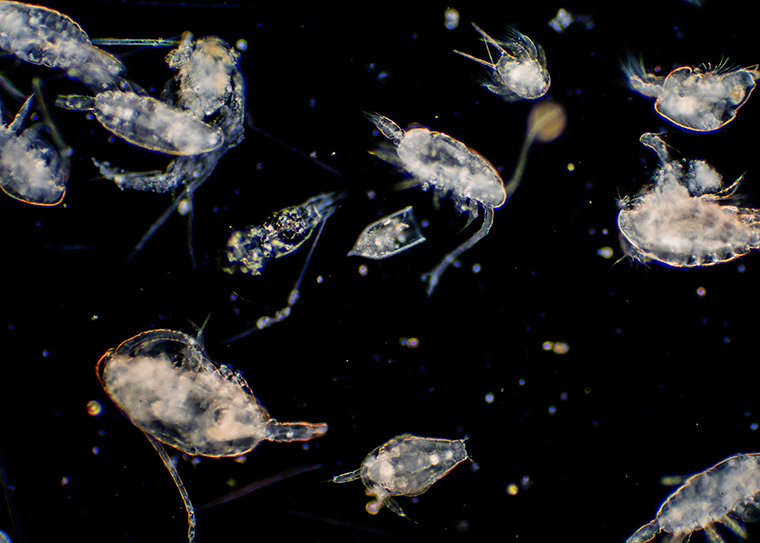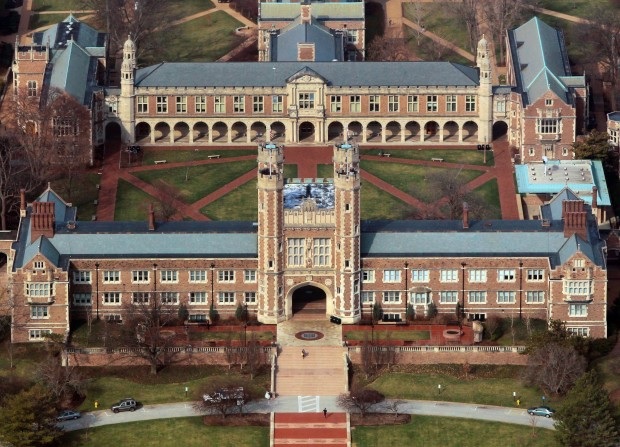From Washington University in St. Louis
July 20, 2021
Talia Ogliore
talia.ogliore@wustl.edu
The remains of microscopic plankton blooms in near-shore ocean environments slowly sink to the seafloor, setting off processes that forever alter an important record of Earth’s history, according to research from geoscientists, including David Fike at Washington University in St. Louis.
Fike is co-author of a new study published July 20 in Nature Communications.

Photo: Shutterstock.
“Our previous work identified the role that changing sedimentation rates had on local versus global controls on geochemical signatures [Science Advances] that we use to reconstruct environmental change,” said Fike, professor of earth and planetary sciences and director of environmental studies in Arts & Sciences.
“In this study, we investigated organic carbon loading, or how much organic matter — which drives subsequent microbial activity in the sediments — is delivered to the seafloor,” Fike said. “We are able to show that this, too, plays a critical role in regulating the types of signals that get preserved in sediments.
“We need to be aware of this when trying to extract records of past ‘global’ environmental change,” he said.
Scientists have long used information from sediments at the bottom of the ocean — layers of rock and microbial muck — to reconstruct the conditions in oceans of the past.

Plankton are microscopic organisms drifting in the oceans. Photo: Shutterstock.
A critical challenge in understanding Earth’s surface evolution is differentiating between signals preserved in the sedimentary record that reflect global processes, such as the evolution of ocean chemistry, and those that are local, representing the depositional environment and the burial history of the sediments.
The new study is based on analyses of a mineral called pyrite (FeS2) that is formed in marine sediments influenced by bacterial activity. The scientists examined concentrations of carbon; nitrogen; sulfur; and stable isotopes of glacial-interglacial sediments on the seafloor along the continental margin off of modern-day Peru.
Varying rates of microbial metabolic activity, regulated by regional oceanographic variations in oxygen availability and the flux of sinking organic matter, appear to have driven the observed pyrite sulfur variability on the Peruvian margin, the scientists discovered.
The study was led by Virgil Pasquier, a postdoctoral fellow at the Weizmann Institute of Sciences (IL) , and co-authored by Itay Halevy, also of the Weizmann Institute. Pasquier previously worked with Fike at Washington University. Together, the collaborators have raised concerns about the common use of pyrite sulfur isotopes to reconstruct Earth’s evolving oxidation state.
“We seek to understand how Earth’s surface environment has changed over time,” said Fike, who also serves as director of Washington University’s International Center for Energy, Environment and Sustainability. “In order to do this, it’s critical to understand the kinds of processes that can influence the records we use for these reconstructions.”
“In this study, we have identified an important factor — local organic carbon delivery to the seafloor — that modifies the geochemical signatures preserved in sedimentary pyrite records,” he said. “It overprints potential records of global biogeochemical cycling with information about changes in the local environment.
“This observation provides a new window to reconstruct past local environmental conditions, which is quite exciting,” Fike said.

Shallow water at the edge of the Pacific Ocean reflects cloudy morning skies at Moeraki Boulders Beach, on the South Island of New Zealand. Image: Shutterstock.
See the full article here .
five-ways-keep-your-child-safe-school-shootings
Please help promote STEM in your local schools.
Washington University in St. Louis is a private research university in Greater St. Louis with its main campus (Danforth) mostly in unincorporated St. Louis County, Missouri, and Clayton, Missouri. It also has a West Campus in Clayton, North Campus in the West End neighborhood of St. Louis, Missouri, and Medical Campus in the Central West End neighborhood of St. Louis, Missouri.
Founded in 1853 and named after George Washington, the university has students and faculty from all 50 U.S. states and more than 120 countries. Washington University is composed of seven graduate and undergraduate schools that encompass a broad range of academic fields. To prevent confusion over its location, the Board of Trustees added the phrase “in St. Louis” in 1976. Washington University is a member of the Association of American Universities (US) and is classified among “R1: Doctoral Universities – Very high research activity”.
As of 2020, 25 Nobel laureates in economics, physiology and medicine, chemistry, and physics have been affiliated with Washington University, ten having done the major part of their pioneering research at the university. In 2019, Clarivate Analytics ranked Washington University 7th in the world for most cited researchers. The university also received the 4th highest amount of National Institutes of Health (US) medical research grants among medical schools in 2019.
Research
Virtually all faculty members at Washington University engage in academic research, offering opportunities for both undergraduate and graduate students across the university’s seven schools. Known for its interdisciplinary and departmental collaboration, many of Washington University’s research centers and institutes are collaborative efforts between many areas on campus. More than 60% of undergraduates are involved in faculty research across all areas; it is an institutional priority for undergraduates to be allowed to participate in advanced research. According to the Center for Measuring University Performance, it is considered to be one of the top 10 private research universities in the nation. A dedicated Office of Undergraduate Research is located on the Danforth Campus and serves as a resource to post research opportunities, advise students in finding appropriate positions matching their interests, publish undergraduate research journals, and award research grants to make it financially possible to perform research.
According to the National Science Foundation (US), Washington University spent $816 million on research and development in 2018, ranking it 27th in the nation. The university has over 150 National Institutes of Health funded inventions, with many of them licensed to private companies. Governmental agencies and non-profit foundations such as the NIH, Department of Defense (US), National Science Foundation, and National Aeronautics Space Agency (US) provide the majority of research grant funding, with Washington University being one of the top recipients in NIH grants from year-to-year. Nearly 80% of NIH grants to institutions in the state of Missouri went to Washington University alone in 2007. Washington University and its Medical School play a large part in the Human Genome Project, where it contributes approximately 25% of the finished sequence. The Genome Sequencing Center has decoded the genome of many animals, plants, and cellular organisms, including the platypus, chimpanzee, cat, and corn.
NASA hosts its Planetary Data System Geosciences Node on the campus of Washington University. Professors, students, and researchers have been heavily involved with many unmanned missions to Mars. Professor Raymond Arvidson has been deputy principal investigator of the Mars Exploration Rover mission and co-investigator of the Phoenix lander robotic arm.
Washington University professor Joseph Lowenstein, with the assistance of several undergraduate students, has been involved in editing, annotating, making a digital archive of the first publication of poet Edmund Spenser’s collective works in 100 years. A large grant from the National Endowment for the Humanities (US) has been given to support this ambitious project centralized at Washington University with support from other colleges in the United States.
In 2019, Folding@Home (US), a distributed computing project for performing molecular dynamics simulations of protein dynamics, was moved to Washington University School of Medicine from Stanford University (US). The project, currently led by Dr. Greg Bowman, uses the idle CPU time of personal computers owned by volunteers to conduct protein folding research. Folding@home’s research is primarily focused on biomedical problems such as Alzheimer’s disease, Cancer, Coronavirus disease 2019, and Ebola virus disease. In April 2020, Folding@home became the world’s first exaFLOP computing system with a peak performance of 1.5 exaflops, making it more than seven times faster than the world’s fastest supercomputer, Summit, and more powerful than the top 100 supercomputers in the world, combined.



